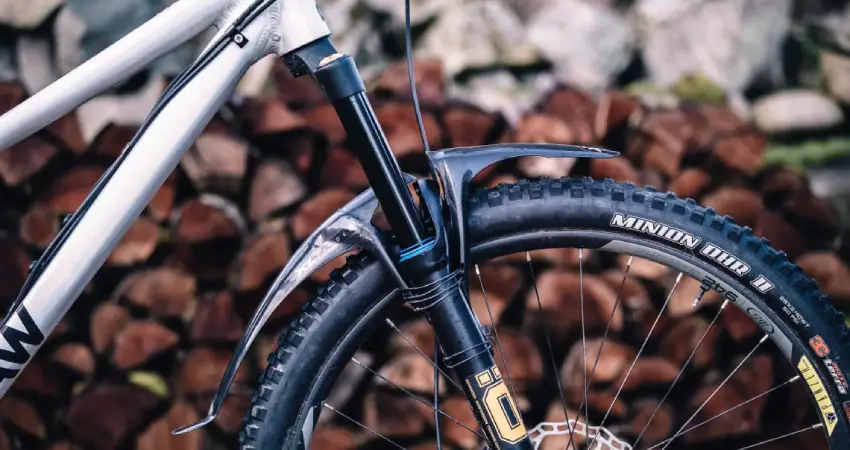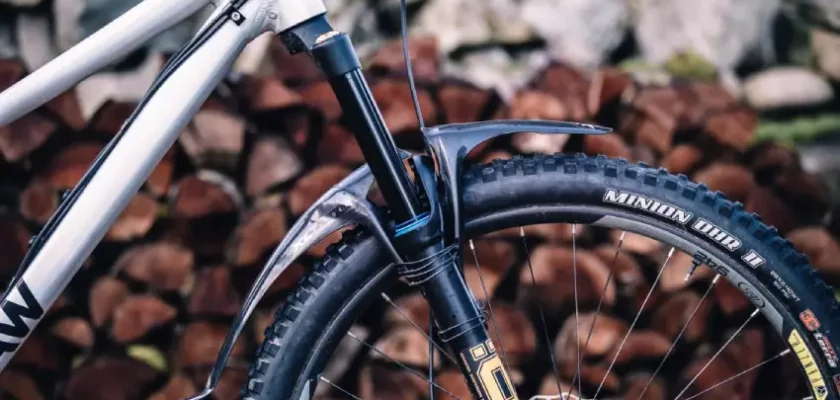Ever wondered if you can put fenders on a mountain bike? Well, the answer is simple: yes, you can! But before we dive into the details, let’s take a moment to imagine yourself riding through muddy trails or rainy roads, splashing water and dirt everywhere. Not the most pleasant feeling, right?
That’s where fenders come in handy. By attaching these sleek and functional accessories to your mountain bike, you can protect yourself from being soaked in muddy waters and keep your bike cleaner as well. But there’s more to it than just the practicality – fenders can also add a touch of style to your off-road adventures.
In this article, we’ll discuss the options, benefits, and considerations when it comes to putting fenders on a mountain bike. So, if you’re eager to explore how you can enhance your riding experience while keeping yourself and your bike dirt-free, let’s jump right into it!
Can You Put Fenders on a Mountain Bike?

When it comes to mountain biking, riders often find themselves facing different weather conditions that can make biking a messy endeavor. Whether it’s riding through muddy trails, splashing through puddles, or facing rain showers, having fenders on your mountain bike can be a game changer.
Fenders are designed to protect you and your bike from mud, water, and debris, ensuring a more comfortable and clean ride. If you’re wondering whether you can put fenders on a mountain bike, let’s dive into the details.
Why Consider Fenders for Your Mountain Bike?
Mountain biking is an adventurous sport that often takes riders off-road, where terrain and weather can be unpredictable. Here are some reasons why you should consider installing fenders on your mountain bike:
1. Protection from Mud and Water: Riding trails after rainfall or in wet conditions can result in mud splatter and water spray, leaving you and your bike caked in grime. Fenders can keep you clean and dry, preventing mud from accumulating on your clothes and reducing the risk of your vision being impaired by dirt or water on your goggles.
2. Improved Bike Performance: Mud and debris buildup on the moving parts of your bike, such as the chain and gears, can affect performance and increase wear and tear. Fenders can help minimize the amount of dirt and mud that reaches these components, keeping your bike running smoother and potentially enhancing its longevity.
3. Enhanced Comfort: Fenders can reduce the amount of spray hitting your face and body as you ride. This can make a considerable difference, especially when riding in cold or wet conditions, ensuring a more enjoyable experience on the trails.
4. Preserving Trail Conditions: Riding on muddy trails without fenders can create ruts and damage the trail surface, making it less enjoyable for others. By installing fenders, you can minimize this impact and help preserve the trails for everyone’s continued enjoyment.
Types of Fenders for Mountain Bikes
Now that you’re aware of the benefits, let’s explore the different types of fenders available for mountain bikes. There are several options to consider, each with its own advantages and limitations:
1. Clip-On Fenders: These fenders attach to the seat post or downtube using clamps or zip ties. They are usually made of lightweight materials such as plastic or rubber. Clip-on fenders are easy to install and remove, making them a popular choice for riders who want versatility.
2. Full-Length Fenders: Full-length fenders offer the most comprehensive protection, covering a significant portion of the front and rear wheels. They attach to the frame or fork of the bike, providing ample coverage against mud and water. Full-length fenders often require more involved installation and are more permanently attached to the bike.
3. Mudguards: Mudguards, also known as mud flaps, are smaller fenders that primarily focus on protecting the rider’s face and eyes from spray and debris. They are typically attached to the front suspension fork and can be a great addition for riders who prioritize facial protection.
Considerations for Installing Fenders on a Mountain Bike
Before rushing to install fenders on your mountain bike, here are some important considerations to keep in mind:
1. Tire Clearance: Mountain bikes often have wider tires and aggressive tread patterns, allowing them to handle rough terrain more effectively. Before selecting fenders, ensure that you have sufficient tire clearance to accommodate the added width of the fenders, taking into account any mud that might accumulate between the fender and the tire.
2. Bike Frame: Different bike frames have varying levels of compatibility with fenders. Some frames come with integrated fender mounts, making installation straightforward. However, many mountain bikes lack these mounts. In such cases, you may need to explore alternative mounting options or consider the use of clip-on fenders.
3. Suspension Fork: If your mountain bike is equipped with a suspension fork, consider how the fender will interact with it. Some fenders may interfere with the suspension’s range of motion, leading to reduced performance or even damage. Ensure that the fenders you choose are compatible with your suspension fork.
4. Weight: As an enthusiastic mountain biker, you value the lightness and agility of your bike. Adding fenders can increase the weight slightly, affecting the bike’s overall performance and handling. When selecting fenders, consider their weight and impact on the bike’s maneuverability.
5. Mounting Systems: Different fenders utilize various mounting systems. Be sure to choose fenders that offer secure and reliable attachment mechanisms, preventing them from coming loose or shifting during your rides. This is particularly vital for off-road biking, where vibrations and bumps can put extra stress on the fenders.
Frequently Asked Questions
1. Can fenders be installed on a mountain bike?
Yes, fenders can be installed on a mountain bike. They help protect you from mud, water, and dirt while riding off-road or in wet conditions.
2. Are there different types of fenders compatible with mountain bikes?
Yes, there are various types of fenders available for mountain bikes, such as clip-on fenders, full-length fenders, and quick-release fenders. Choose the one that suits your bike and riding style.
3. Do fenders affect the performance of a mountain bike?
Fenders can slightly add weight to the bike, affecting its performance. However, the benefits of using fenders outweigh this minimal drawback, as they provide better visibility, prevent mud clogging, and keep you and your bike cleaner.
4. Can fenders be installed on any mountain bike model?
Most mountain bikes have mounting points for fenders on the front fork and seat stays, making them compatible. However, it is essential to consider the frame and tire clearance of your specific bike before purchasing and installing fenders.
5. Can I install fenders on a mountain bike with suspension?
If your mountain bike has front or rear suspension, you may still be able to install certain types of fenders designed for suspension bikes. However, it’s crucial to ensure compatibility and consider the additional clearance required for suspension movement.
Final Thoughts
In summary, it is possible to put fenders on a mountain bike. Although mountain bikes are primarily designed for off-road trails and rough terrains, adding fenders can provide significant benefits when riding in wet or muddy conditions. Fenders help to keep mud, water, and debris from splashing onto the rider and the bike’s components, resulting in a cleaner and more comfortable ride.
However, it is essential to choose fenders that are compatible with your mountain bike’s frame and tire size. Additionally, consider the weight and versatility of the fenders, as they should not interfere with the bike’s performance on challenging trails.
With careful selection and installation, adding fenders to your mountain bike can enhance your riding experience, making it more enjoyable in various weather conditions. So, if you’re wondering, “Can you put fenders on a mountain bike?” the answer is yes, as long as you choose the right fenders and ensure they are installed properly.

